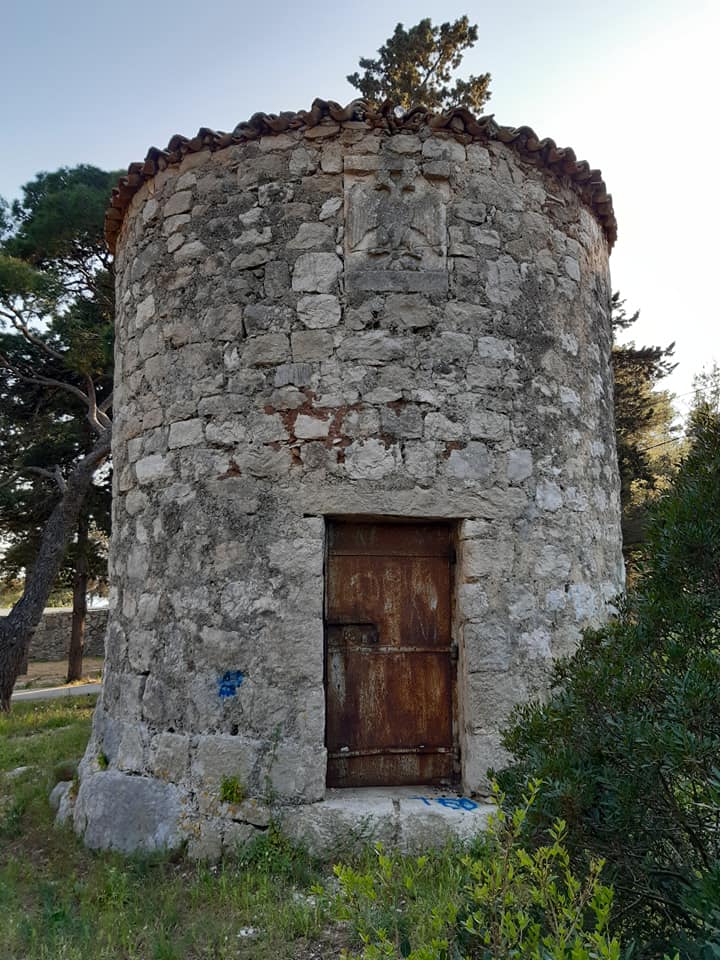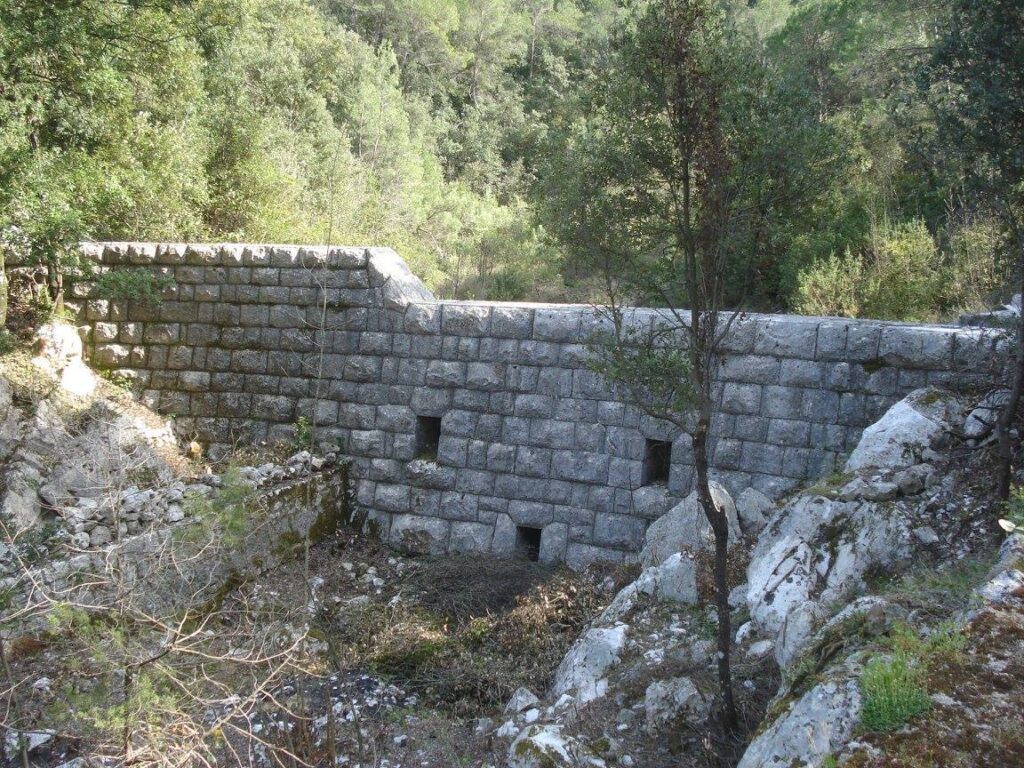Looking at the landscape of the island of Hvar interwoven with grape vine, olives, forests, macchia and karst, it is very difficult to believe that wheat and other cereals used to be grown there. Nowadays, at the time of long dry periods that affect the entire Europe, especially this year, it is hard to imagine gurgling of streams and the power of torrents that formed ravines in the island landscape. The time has long gone by when we had a different affiliation with nature and relied on the power of much-needed water and wind for better results of human work.
Mills, windmills and stone dams are now only witnesses of such past. Now obsolete and seamlessly merged with the surroundings, they are at first difficult to observe or recognise their former purpose. Therefore this text will serve as a brief reminder of the forces that used to shape the island.
Long time ago, the river Farion (Pharion) flowed through the vast and fertile Stari Grad Plain – Ager. It was first mentioned by the Greek writer Ephorus in the 4th century B.C. Its source was in the mountain range above the village of Dol. Pharion flowed into the sea at the site of today’s Stari Grad. It is assumed that today it is the stream called Vir that flows through the villages of Vrbanj and Dol together with its tributaries. Only the wide walled riverbed testifies to the power of the water that passed there after heavy rains that are hardly conceivable today. At the intersection of the roads to Stari Grad and Dol, which was once the bottom of the riverbed, there is a low ruin. Nothing reveals that it is a former mill that the locals call Žorkov or Ostojića mill. The doctor and landowner Petar Ostojić had it built at the beginning of the 19th century and the word has it is the only watermill on the island of Hvar. This means that the Vir stream was active throughout the entire year for a very long time, until the second half of the 19th century when the mill was put out of function due to scarce precipitation.
The Austrian Empire, that ruled this region for centuries, paid special attention to building of the infrastructure for surface run-offs and water flows. They had massive stone dams built (locally known as pumpurele) in the riverbeds near villages of Pitve and Dol. These large stone walls tell us about raging torrents that would probably destroy everything on their path. Something that people used to talk about for generations. One hundred and fifty years ago, in a narrow gorge between villages of Malo Grablje and Milna that are two kilometres away from each other, a violent torrent swept away mules loaded with baskets and bellows that were used to carry grapes, and their owner drowned.
In the past, it was not uncommon to see windmills on the Adriatic coast. The one situated in the Istrian town of Medulin was recently renovated, and the toponyms as e.g. Malinska (a village on the island of Krk) (malin = mill) are the reminders of those buildings. At the entrance to the harbour of Stari Grad there is still a circular building, a former windmill, built in the 19th century. Even before the World War II, the notable people of Stari Grad advocated the idea of restoration of this mill, thinking that “it would not be quixotic if the wings of the windmill were still turning today, given the strength of the winds coming from the open sea into the bay of Stari Grad”, referring to the refreshing tarmuntona (north wind). Today the Stari Grad mill is a private facility rented to tourists.
In the town of Hvar it is now very difficult to observe two former mills that are now merged between houses and pines. They are conspicuous only on the old photographs with bare hills around the town without any houses built on them. The older of the two, originating in 18th century was built by Roić brothers on the hill called Glavica, not far from the current local cemetery. Today, it is a rental facility, but locally it is still known as mlin (mill). The other preserved windmill was built by the noble family Lupi couple of year later in the 18th century. It is situated near the monastery of St. Veneranda on the west side of the harbour. Today, it is a derelict building, a ruin, serving as a storage. However, plans are made for its restoration. It seems that projects like this turned out to be short-term projects that depended on unpredictable forces of nature – the constant of the wind and mercy of the rain.

The settlements Jelsa and Vrboska situated in the central part of the island have taken the longest road from little watermills using waters from the nearby hills to the real industrial revolution. At the end of the 19th century, a steam mill was opened in ownership of the noble family Duboković. It was functional even after the World War II. Its rollers milled grains for the entire island (about 450,000 kg per year). The other steam mills in Jelsa and Vrboska milled dry white flowers of Dalmatian pellitory (Chrysanthemum cinerariifolium), a strong natural insecticide that was for a long time the number one export produce of the island of Hvar.
However, the time and progress cannot be stopped, and the progress opened some new possibilities for the island. However, maybe these old forgotten skills hide a key to a different more sustainable life on our island.

